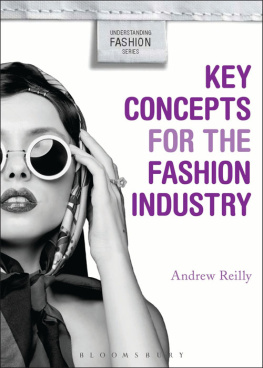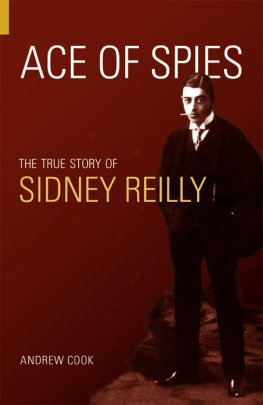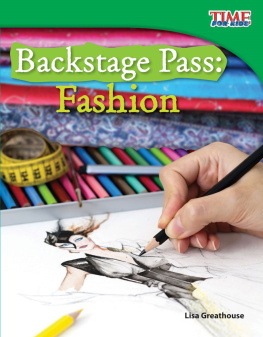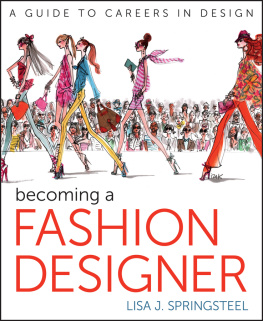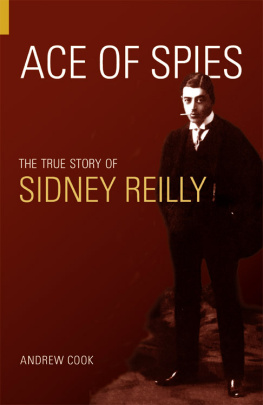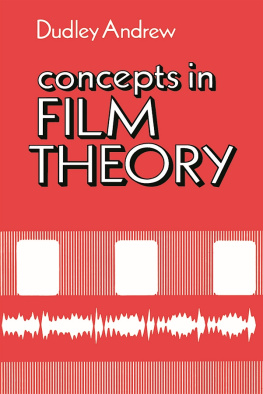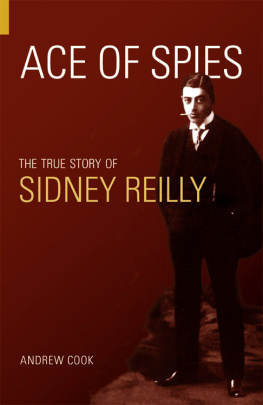Andrew Reilly - Key Concepts for the Fashion Industry
Here you can read online Andrew Reilly - Key Concepts for the Fashion Industry full text of the book (entire story) in english for free. Download pdf and epub, get meaning, cover and reviews about this ebook. year: 2014, publisher: Bloomsbury Academic, genre: Politics. Description of the work, (preface) as well as reviews are available. Best literature library LitArk.com created for fans of good reading and offers a wide selection of genres:
Romance novel
Science fiction
Adventure
Detective
Science
History
Home and family
Prose
Art
Politics
Computer
Non-fiction
Religion
Business
Children
Humor
Choose a favorite category and find really read worthwhile books. Enjoy immersion in the world of imagination, feel the emotions of the characters or learn something new for yourself, make an fascinating discovery.
- Book:Key Concepts for the Fashion Industry
- Author:
- Publisher:Bloomsbury Academic
- Genre:
- Year:2014
- Rating:4 / 5
- Favourites:Add to favourites
- Your mark:
- 80
- 1
- 2
- 3
- 4
- 5
Key Concepts for the Fashion Industry: summary, description and annotation
We offer to read an annotation, description, summary or preface (depends on what the author of the book "Key Concepts for the Fashion Industry" wrote himself). If you haven't found the necessary information about the book — write in the comments, we will try to find it.
Key Concepts for the Fashion Industry — read online for free the complete book (whole text) full work
Below is the text of the book, divided by pages. System saving the place of the last page read, allows you to conveniently read the book "Key Concepts for the Fashion Industry" online for free, without having to search again every time where you left off. Put a bookmark, and you can go to the page where you finished reading at any time.
Font size:
Interval:
Bookmark:
Understanding Fashion series
ISSN 17533406
Series Editors:
Alison Goodrum, Manchester Metropolitan University, UK
Kim Johnson, University of Minnesota, USA
Understanding Fashion is a series of short, accessible, authored books designed to provide students with a map of the fashion field. The books are aimed at beginning undergraduate students and they are designed to cover an entire module. Accessibly written, each book will include boxed case studies, bullet point chapter summaries, guides to further reading, and questions for classroom discussion. Individual titles can be used as a key text or to support a general introductory survey. They will be of interest to students studying fashion from either an applied or cultural perspective.
Titles in the series include:
Fashion Design
Elizabeth Bye
Fashion and the Consumer
Jennifer Yurchisin and Kim K.P. Johnson
Fashion Trends: Analysis and Forecasting
Eundeok Kim, Ann Marie Fiore and Hyejeong Kim

The author recognizes the following people for their involvement in helping to produce this book: Dr. Kim K. P. Johnson, for asking me to write a proposal on fashion theory for the Understanding Fashion series; Marcia Morgado for her patience with my endless question, does this make sense?; Dr. Attila Pohlmann for his assistance with photography; Dr. Barbara (Bobbie) Yee, chair of the Department of Family and Consumer Sciences at the University of Hawaii, Mnoa, for her support of my writing; all team members at Bloomsbury Academic (formerly Berg) for their guidance, suggestions, and patience, including Anna Wright, Hannah Crump, and Emily Roessler; and my mother, Judith Charboneau, father, Terry Reilly, brother, Noah Reilly, my grandparents, Bill and Doris Hinchcliffe, and dog Holly for their continued support of my career.
The author and publisher gratefully acknowledge the permission granted to reproduce the copyright material in the book.
Nata Aha/Shutterstock.com
Anne Bissonnette
S_buckley/Shutterstock.com
Roz Chast/The New Yorker Collection/www.cartoonbank.com
Mary Lynn Damhorst
Fairchild Books
Mark Hamilton
Natali Glado/Shutterstock.com
International Textile and Apparel Association
Kim Miller-Spillman
Lobke Peers/Shutterstoc.com
Levi Strauss & Company, San Francisco
Estate of Roy Lichtenstein
Joseph McKeown
George Chinsee/WWD Cond Nast 1992
Helga Esteb/Shutterstock.com
Dominique Maitre/WWD Cond Nast 2009
Christopher Meder Photography/Shutterstock.com
Northfoto/Shutterstock.com
The Ohio State University Historic Costume and Textiles Collection
Paffy/Shutterstock.com
Tony Palmieri/WWD Cond Nast 1984
Attila Pohlmann
Josephine Schiele/Lucky Cond Nast
Pascal Le Segretain/Getty Images
Jen Sorensen
Vladyslav Starozhylov/Shutterstock.com
University of Hawaii Historic Costume Museum
Victoria and Albert Museum, London
Greg Ward NZ/Shutterstock.com
Julie Whitehead
Billy Whitney, 808 Tattoo
Every effort has been made to trace copyright holders and to obtain their permission for the use of copyright material. This publisher apologizes for any errors or omissions in the above list and would be grateful if notified of any corrections that should be incorporated into future reprints to editions of this book.
In Paris a fashion designer is sketching a new collection. At a convention in Las Vegas a buyer is looking among more than one thousand vendors to select dresses to sell in a boutique in Miami. In London a forecaster is analyzing data to predict the fashion trends three years from now. In Shanghai a merchandiser is preparing a report to propose the fashion direction for a popular chain of budget-priced retail stores throughout Asia. Each of these people is an expert in their field and each person will use a framework or principles of fashion to guide their decisions. The fashion designer will lower the hemline of dresses by two inches because she understands the directional nature of fashion. The buyer will scout for merchandise that is unique and exclusive because his customers desire to look different from other people. The forecaster will examine the social movements to make a prediction because she understands how society impacts trends. And, the merchandiser will flood the market with a few styles because he understands that if businesses offer a limited number of styles there is greater chance of them becoming a trend. Each of these people makes logical choices based on established principles and concepts of fashion.
The word theory is derived from the ancient Greek word theoria which meant to look at or view. Greek philosophers would look at a situation and try to find an explanation for it. In scientific terms today theories are a framework for thinking about, examining, or interpreting something. Consider the following definitions of theory:
A theory consists of a conceptual network of propositions that explain an observable phenomenon (Lillethun, 2007, 77).
A systematic explanation for the observations that relate to a particular aspect of life (Babbie, 2004, G11).
A set of interrelated constructions (variables), definitions, and propositions that presents a systematic view of phenomena by specifying relations among variables, with the purpose of explaining natural phenomena (Kerlinger, 1979, p. 64).
An idea or set of ideas that is intended to explain facts or events; an idea that is suggested or presented as possibly true but that is not known or proven to be true (Merriam-Webster, 2013a, n.p.).
A contemplative and rational type of abstract or generalized thinking or the results of such thinking (Wikipedia, 2013, n.p.).
We can examine behaviors, actions, occurrences, works, and any other tangible or intangible phenomena. Theories are made of different parts that contribute to the total understanding. Part of the theory might be true while other parts might not have support, but it does not necessarily change the theory as a whole. Like fashion itself, the theories that explain fashion movement are constantly revised and refined (Brannon, 2005, p. 82). By analogy, a garment that is made up of a bodice, skirt, collar, sleeves, and cuffs is called a dress. However, if you take off the cuffs it is still called a dress, or if you add a pocket it is still a dress. Changing part of the whole does not invalidate the whole.
Theories are divided into three categories based on their scope of explanation: grand, middle-range, and substantive (Merriam, 1988). Grand theories are very broad, all-inclusive, universal and are useful for organizing other ideas; they offer general ideas, such as Albert Einsteins Theory of Relativity. Middle-range theories do not attempt to explain such overarching phenomenon as do grand theories but rather concentrate on limited phenomena; one could argue that the theory of collective behavior (i.e., that fashion trends are inspired by specific groups of people with unique aesthetic styles; further explained in Chapter 4) is a middle-range theory. And substantive theories offer ideas and reasons in a narrow setting, such as the reasons for Japanese immigrants to adopt westernized clothing in Honolulu, Hawaii in the 1920s.
Next pageFont size:
Interval:
Bookmark:
Similar books «Key Concepts for the Fashion Industry»
Look at similar books to Key Concepts for the Fashion Industry. We have selected literature similar in name and meaning in the hope of providing readers with more options to find new, interesting, not yet read works.
Discussion, reviews of the book Key Concepts for the Fashion Industry and just readers' own opinions. Leave your comments, write what you think about the work, its meaning or the main characters. Specify what exactly you liked and what you didn't like, and why you think so.

